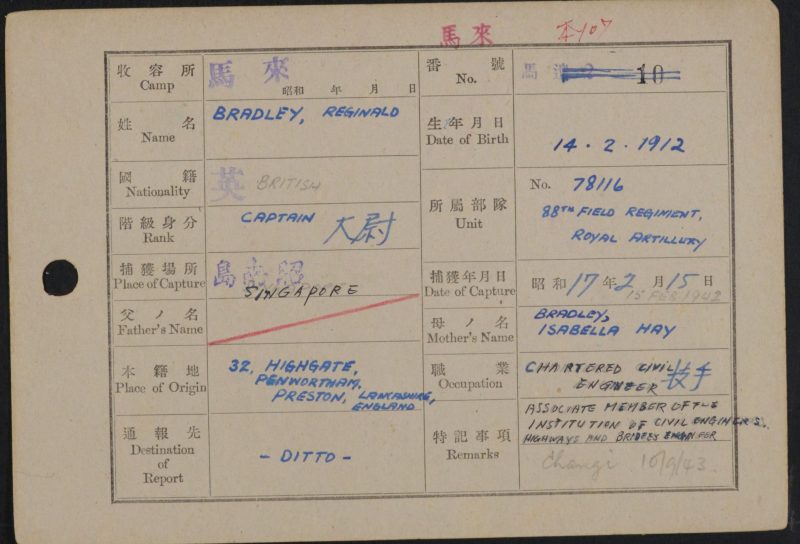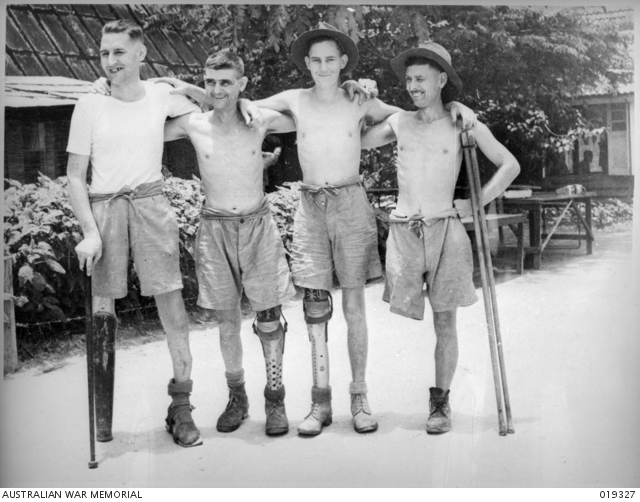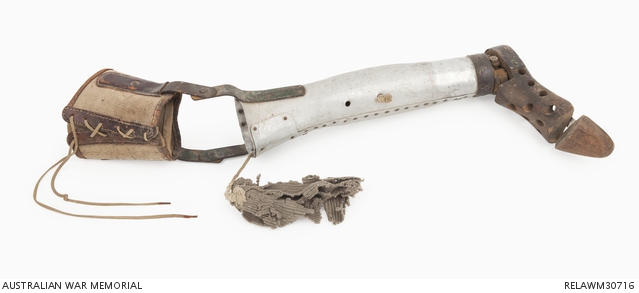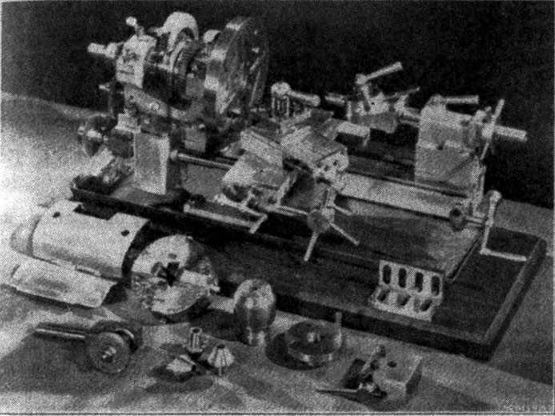There are a lot of benefits to writing for Hackaday, but hands down one of the best is getting paid to fall down fascinating rabbit holes. These often — but not always — delightful journeys generally start with chance comments by readers, conversations with fellow writers, or just the random largesse of The Algorithm. Once steered in the right direction, a few mouse clicks are all it takes for the properly prepared mind to lose a few hours chasing down an interesting tale.
I’d like to say that’s exactly how this article came to be, but to be honest, I have no idea where I first heard about the prison camp lathe. I only know that I had a link to a PDF of an article written in 1949, and that was enough to get me going. It was probably a thread I shouldn’t have tugged on, but I’m glad I did because it unraveled into a story not only of mechanical engineering chops winning the day under difficult circumstances, but also of how ingenuity and determination can come together to make the unbearable a little less trying, and how social engineering is an important a skill if you want to survive the unsurvivable.
Finding Reggie
For as interesting a story as this is, source material is hard to come by. Searches for “prison camp lathe” all seem to point back to a single document written by one “R. Bradley, A.M.I.C.E” in 1949, describing the building of the lathe. The story, which has been published multiple times in various forms over the ensuing eight decades, is a fascinating read that’s naturally heavy on engineering details, given the subject matter and target audience. But one suspects there’s a lot more to the story, especially from the few tantalizing details of the exploits surrounding the tool’s creation that R. Bradley floats.
Tracking down more information about Bradley’s wartime experiences proved difficult, but not impossible. Thankfully, the United Kingdom’s National Archives Department has an immense trove of information from World War II, including a catalog of the index cards used by the Japanese Empire to keep track of captured Allied personnel. The cards are little more than “name, rank, and serial number” affairs, but that was enough to track down a prisoner named Reginald Bradley:

Now, it’s true that Reginald Bradley is an extremely British name, and probably common enough that this wasn’t the only Reggie Bradley serving in the Far East theater in World War II. And while the date of capture, 15 February 1942, agrees with the date listed in the lathe article, it also happens to be the date of the Fall of Singapore, the end of a seven-day battle between Allied (mainly British) forces and the Japanese Imperial Army and Navy that resulted in the loss of the island city-state. About 80,000 Allied troops were captured that day, increasing the odds of confusing this Reginald Bradley with the R. Bradley who wrote the article.
The clincher, though, is Reginald Bradley’s listed occupation on the prisoner card: “Chartered Civil Engineer.” Even better is the information captured in the remarks field, which shows that this prisoner is an Associate Member of the Institution of Civil Engineers, which agrees with the “A.C.I.M.E” abbreviation in the article’s byline. Add to that the fact that the rank of Captain in the Royal Artillery listed on the card agrees with the author’s description of himself, and it seems we have our man. (Note: it’s easy to fall into the genealogical rabbit hole at this point, especially with an address and mother’s name to work with. Trust me, though; that way lies madness. It’s enough that the index card pictured above cost me £25 to retrieve from one of the National Archive’s “trusted partner” sites.)
The Royal Society of Social Engineers
The first big question about Captain Bradley is how he managed to survive his term as a prisoner of the Japanese Empire, which, as a non-signatory to the various international conventions and agreements on the treatment of prisoners of war, was famed for its poor treatment of POWs. Especially egregious was the treatment of prisoners assigned to build the Burma Death Railway, an infrastructure project that claimed 45 lives for every mile of track built. Given that his intake card clearly states his civil engineering credentials with a specialty in highways and bridges, one would think he was an obvious choice to be sent out into the jungle.
Rather than suffering that fate, Captain Bradley was sent to the infamous prison camp that had been established in Singapore’s Changi Prison complex. While not pleasant, it was infinitely preferable to the trials of the jungle, but how Bradley avoided that fate is unclear, as he doesn’t mention the topic at all in his article. He does, however, relate a couple of anecdotes that suggest that bridges and highways weren’t his only engineering specialty. Captain Bradley clearly had some social engineering chops too, which seem to have served him in good stead during his internment.
Within the first year of his term, he and his fellow officers had stolen so many tools from their Japanese captors that it was beginning to be a problem to safely stash their booty. They solved the problem by chatting up a Japanese guard under the ruse of wanting to learn a little Japanese. After having the guard demonstrate some simple pictograms like “dog” and “tree,” they made the leap to requesting the symbol for “workshop.” Miraculously, the guard fell for it and showed them the proper strokes, which they copied to a board and hung outside the officer’s hut between guard changes. The new guard assumed the switch from hut to shop was legitimate, and the prisoners could finally lay out all their tools openly and acquire more.
Another bit of social engineering that Captain Bradley managed, and probably what spared him from railway work, was his reputation as a learned man with a wide variety of interests. This captured the attention of a Japanese general, who engaged the captain in long discussions on astronomy. Captain Bradley appears to have cultivated this relationship carefully, enough so that he felt free to gripe to the general about the poor state of the now officially sanctioned workshop, which had been moved to the camp’s hospital block. A care package of fresh tools and supplies, including drill bits, hacksaw blades, and a supply of aluminum rivets, which would prove invaluable, soon arrived. These joined their pilfered tool collection along with a small set of machines that were in the original hospital shop, which included a hand-operated bench drill, a forge, some vises, and crucially, a small lathe. This would prove vital in the efforts to come, but meanwhile, the shop’s twelve prisoner-machinists were put to work making things for the hospital, mainly surgical instruments and, sadly, prosthetic limbs.
The Purdon Joint

In his article, Captain Bradley devotes curiously little space to descriptions of these prosthetics, especially since he suggests that his “link-motion” design was innovative enough that prisoners who had lost legs to infection, a common outcome even for small wounds given the poor nutrition and even poorer sanitation in the camps, were able to walk well enough that a surgeon in the camp, a British colonel, noted that “It is impossible to tell that the walker is minus a natural leg.” The lack of detail on the knee’s design might also be due to modesty, since other descriptions of these prostheses credit the design of the knee joint to Warrant Officer Arthur Henry Mason Purdon, who was interned at Changi during this period.
A number of examples of the prosthetic legs manufactured at “The Artificial Limb Factory,” as the shop was now dubbed, still exist in museum collections today. The consensus design seems to accommodate below-the-knee amputees with a leather and canvas strap for the thigh, a hinge to transfer most of the load from the lower leg to the thigh around the potentially compromised knee, a calf with a stump socket sculpted from aluminum, and a multi-piece foot carved from wood. The aluminum was often salvaged from downed aircraft, hammered into shape and riveted together. When the gifted supply of aluminum rivets was depleted, Bradley says that new ones were made on the lathe using copper harvested from heavy electrical cables in the camp.

It Takes a Lathe to Make a Lathe
While the Limb Factory was by now a going concern that produced items necessary to prisoners and captors alike, life in a prison camp is rarely fair, and the threat of the entire shop being dismantled at any moment weighed heavily on Captain Bradley and his colleagues. That’s what spurred the creation of the lathe detailed in Bradley’s paper — a lathe that the Japanese wouldn’t know about, and that was small enough to hide quickly, or even stuff into a pack and take on a forced march.
The paper goes into great detail on the construction of the lathe, which started with the procurement of a scrap of 3″ by 3″ steel bar. Cold chisels and drills were used to shape the metal before surfacing it on one of the other lathes using a fly cutter. Slides were similarly chipped from 1/2″ thick plate, and when a suitable piece of stock for the headstock couldn’t be found, one was cast from scrap aluminum using a sand mold in a flask made from sheet steel harvested from a barracks locker.

Between his other shop duties and the rigors of prison life, Captain Bradley continued his surreptitious work on the lathe, and despite interruptions from camp relocations, was able to complete it in about 600 hours spread over six months. He developed ingenious ways to power the lathe using old dynamos and truck batteries. The lathe was used for general maintenance work in the shop, such as making taps and dies to replace worn and broken ones from the original gift of tools bequeathed by the Japanese general.
With the end of the war approaching, the lathe was put to use making the mechanical parts needed for prison camp radios, some of which were ingeniously hidden in wooden beams of the barracks or even within the leg of a small table. The prisoners used these sets to listen for escape and evasion orders from Allied command, or to just get any news of when their imprisonment might be over.
That day would come soon after the atomic bombing of Hiroshima and Nagasaki and Japan’s subsequent surrender in August 1945. The Changi prison camp was liberated about two weeks later, with the survivors returning first to military and later to civilian life. Warrant Officer Purdon, who was already in his 40s when he enlisted, was awarded a Distinguished Combat Medal for his courage during the Battle of Singapore. As for Captain Bradley, his trail goes cold after the war, and there don’t seem to be any publicly available pictures of him. He was decorated by King George VI after the war, though, “for gallant and distinguished service while a prisoner of war,” as were most other POWs. The award was well-earned, of course, but an understatement in the extreme for someone who did so much to lighten the load of his comrades in arms.
Featured image: “Warrant Officer Arthur Henry Mason Purdon, Changi Prison Camp, Singapore. c. 1945“, Australian War Memorial.


